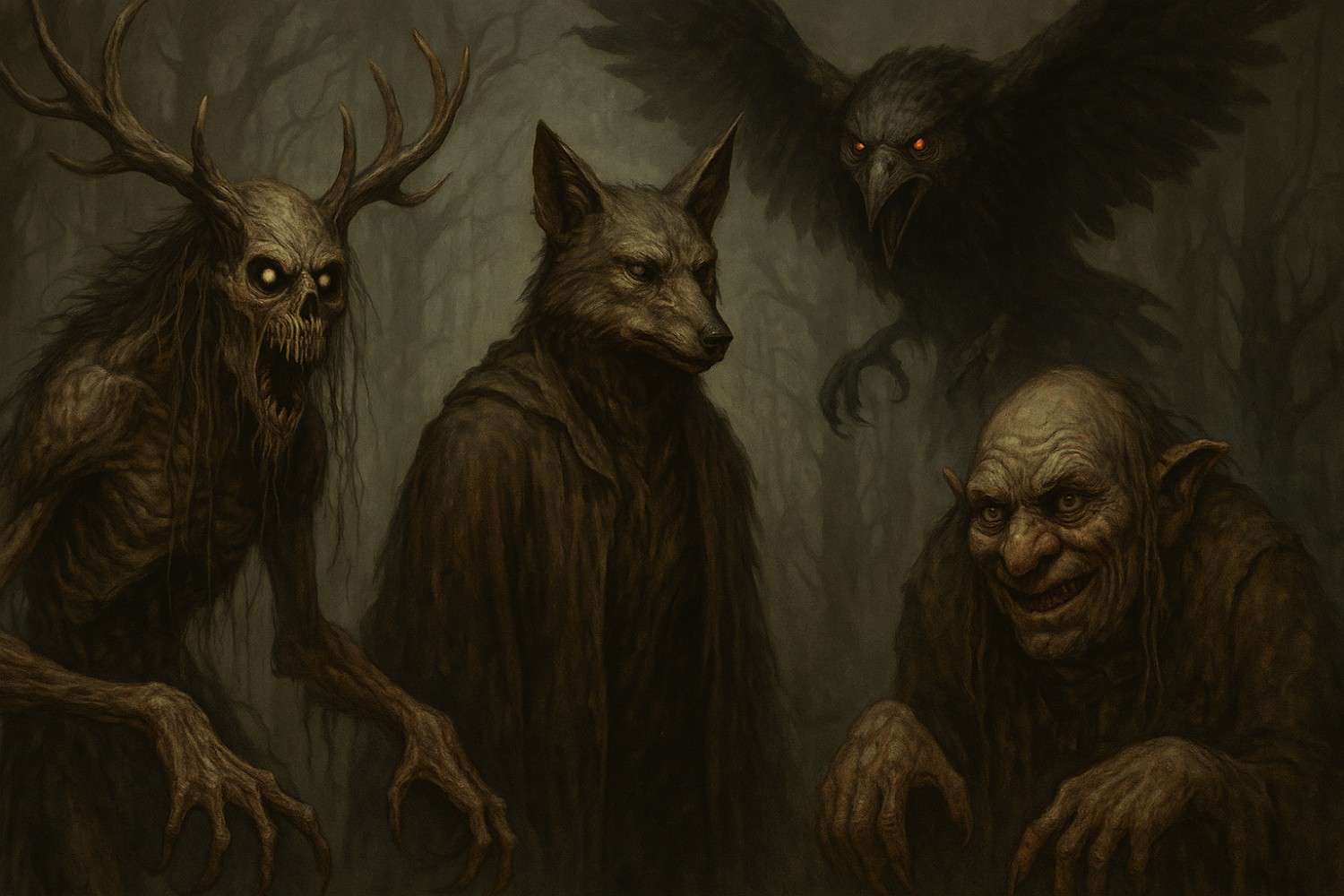From dense forests to icy tundras, Native American cultures across North America have passed down chilling tales of supernatural creatures for generations. These legends are rich with symbolism and mystery, often serving as cautionary tales or explanations for the unknown. Each tribe’s folklore reveals unique beings—both fascinating and fearsome—that reflect how deeply people connect with nature and unseen forces.
1. Wendigo

In Algonquian legend, the Wendigo appears as a monstrous, cannibalistic spirit linked to winter, starvation, and insatiable greed. Stories often describe it as gaunt and towering, with glowing eyes and a heart of ice, and claim it consumes human flesh and infects others with its madness. The tale serves as a warning against excess and losing touch with one’s humanity. The Wendigo’s relentless hunger mirrors themes of isolation and despair, making it one of the most enduring and terrifying figures in Native American folklore.
2. Skinwalker (Navajo)
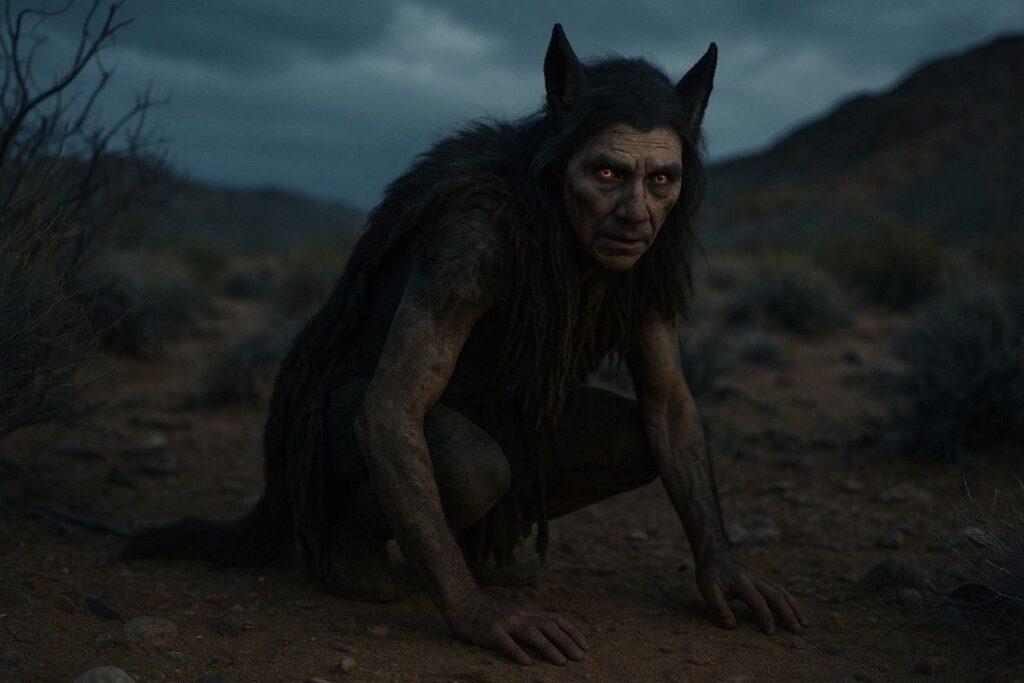
Among the Navajo, the Skinwalker—or “yee naaldlooshii”—is a witch capable of shapeshifting into animals. People believe these beings wield dark magic and often fear them as powerful sorcerers who can inflict harm from a distance. Skinwalkers prowl the night, using their abilities to spread mischief and fear. The stories function as both supernatural warnings and cultural boundaries, emphasizing the dangers of misusing spiritual power.
3. Thunderbird
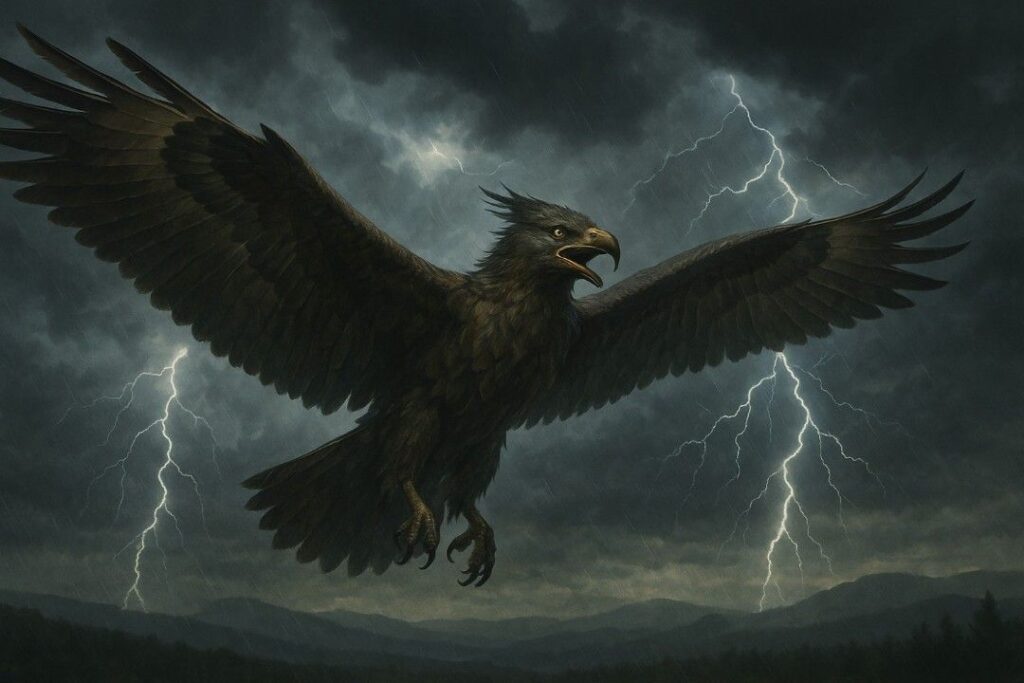
The Thunderbird is a mighty, supernatural bird from the mythology of many Plains and Pacific Northwest tribes. Capable of creating thunder with its wings and lightning with its eyes, the Thunderbird is both a harbinger of storms and a protector against evil. Although sometimes seen as a benevolent force, its immense power and unpredictable nature have made it a source of awe and terror. The Thunderbird often symbolizes nature’s raw, uncontrollable energy.
4. Pukwudgie
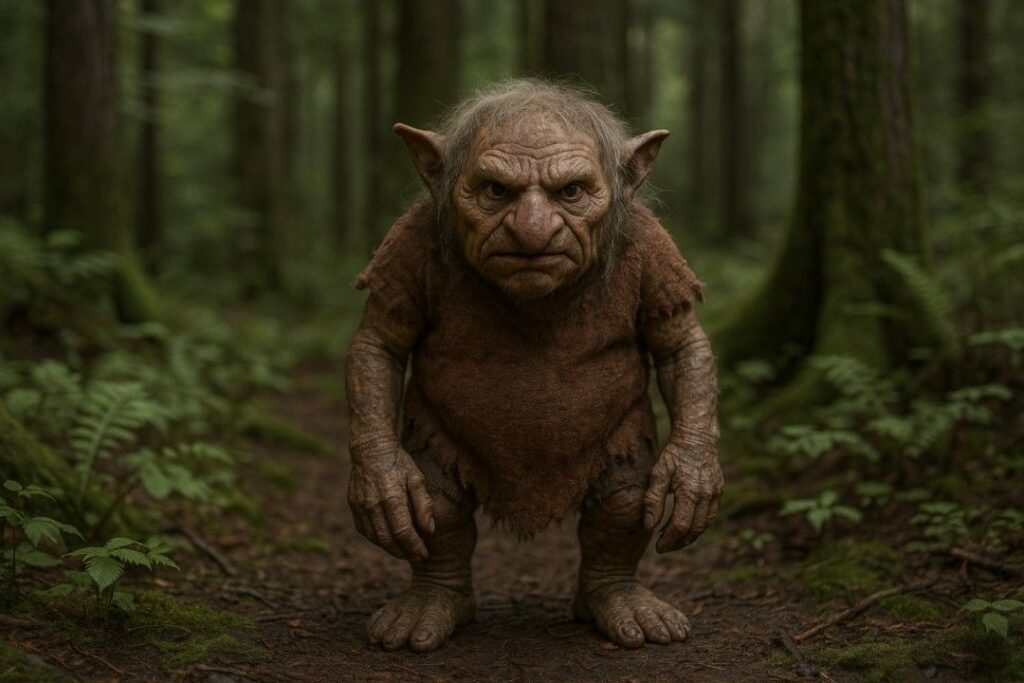
Originating from Wampanoag folklore, Pukwudgies are small, troll-like creatures known for their mischievous and sometimes malevolent behavior. They can appear and disappear at will, lure people astray, or create confusion in the forest. Some stories describe them as tricksters, while others paint them as dangerous beings who can use magic or even kill. Pukwudgies serve as reminders to respect nature and not underestimate seemingly harmless creatures.
5. Chindi
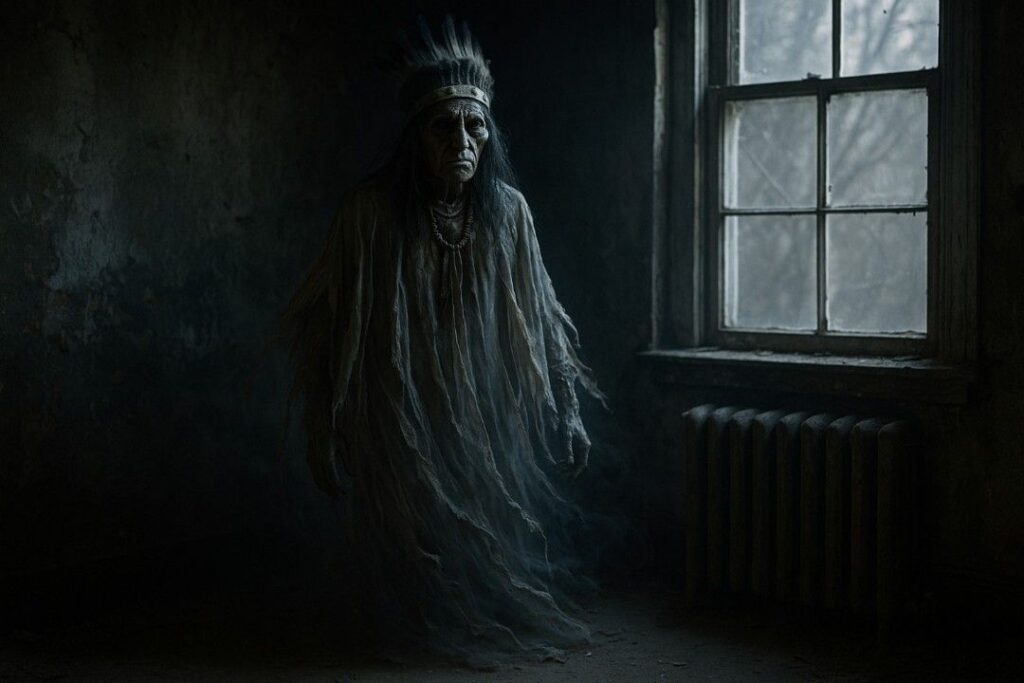
According to Navajo belief, a Chindi remains after a person dies, carrying all the bad that was in them. These spirits are feared because they can bring sickness and misfortune to the living. Navajo tradition often involves specific burial practices to avoid encounters with Chindi, such as sealing up the deceased’s home. The legend highlights the importance of harmony and spiritual balance within the community.
6. Ogopogo
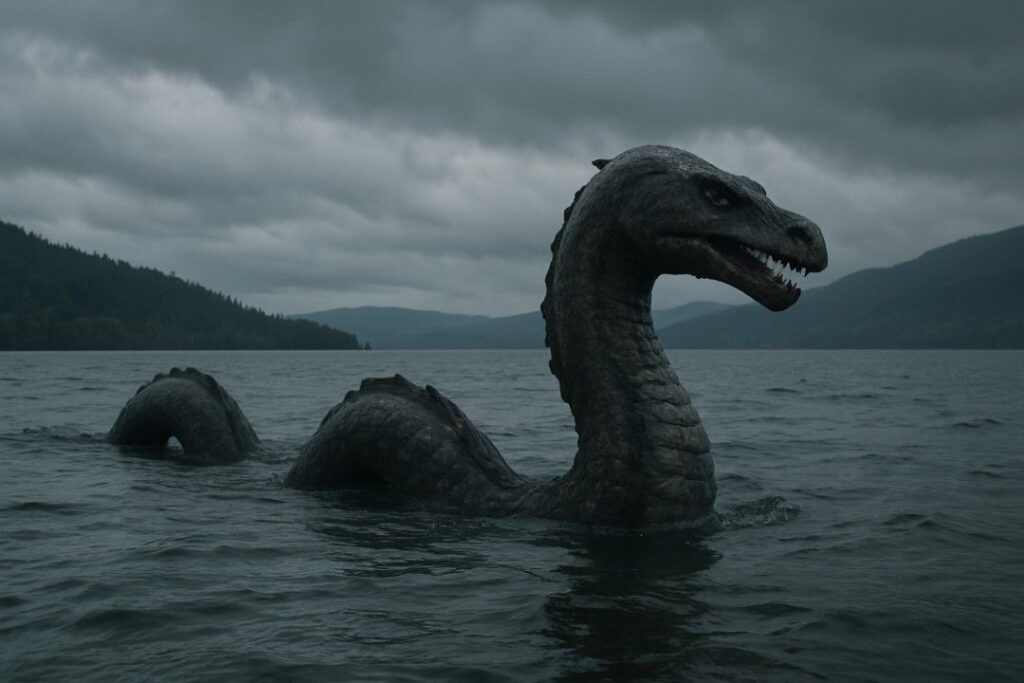
From the Okanagan Valley of British Columbia, Ogopogo is a lake monster said to haunt the waters of Lake Okanagan. People describe Ogopogo as a massive, serpent-like creature and fear it for its rumored appetite for humans and livestock. Indigenous stories often portray it as a guardian of the lake, but also as a force to be respected and feared. Ogopogo’s legend is Canada’s answer to the Loch Ness Monster, blending warning and wonder.
7. Qalupalik

In Inuit mythology, the Qalupalik is a sea-dwelling, human-like creature that snatches away children who stray too close to the water’s edge. Described as having long hair, green skin, and webbed fingers, the Qalupalik keeps her captives under the ice. These stories serve as cautionary tales to keep children safe and wary of dangerous environments. The Qalupalik embodies both the peril and the mystery of the Arctic seas.
8. Horned Serpent
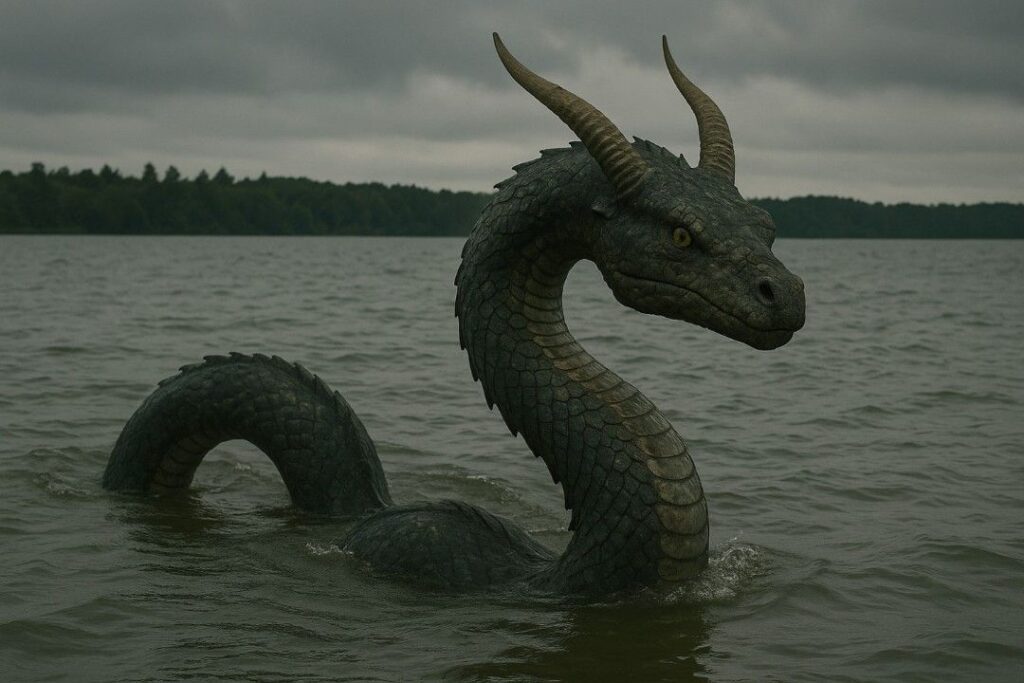
The Horned Serpent is a prominent figure in the mythologies of various tribes, such as the Cherokee, Choctaw, and Lakota. Artists often depict these giant serpents with antlers or horns, and legends say they wield magical powers like controlling weather or guarding great treasures. Encounters with a Horned Serpent are considered extremely dangerous, and they are frequently associated with water sources like rivers or lakes. The legend underscores respect for powerful natural forces.
9. Raven Mocker
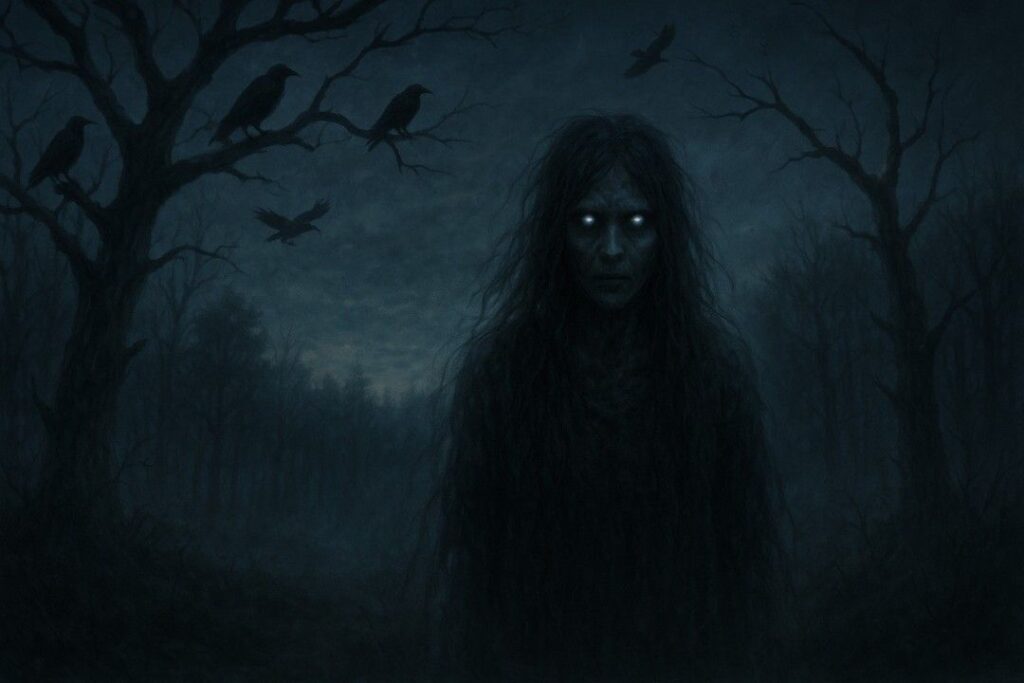
The Raven Mocker is a notorious witch from Cherokee legend, believed to prolong its life by stealing the hearts of the dying. Taking the form of a bird or an invisible spirit, the Raven Mocker is both feared and reviled among medicine men. Its eerie cry foretells death, and its presence brings terror to communities. The story of the Raven Mocker illustrates the importance of skilled healers and the fear of untimely death.
10. Coyote
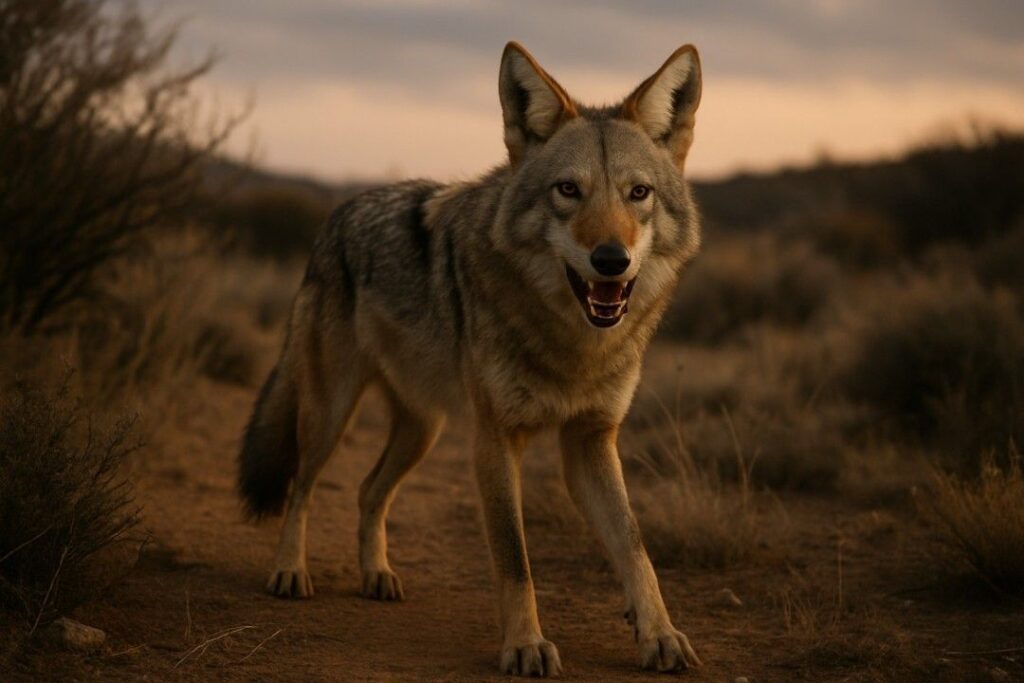
Although often regarded as a trickster figure, Coyote can also be dangerous and deadly in many Native stories, especially in the folklore of tribes from the Southwest. Coyote’s cunning and unpredictability can bring about disaster or chaos, as well as teach important lessons about respect and humility. In some tales, Coyote leads people astray or commits taboo acts, showing how easily arrogance and folly can be one’s undoing.
11. Mishipeshu (Water Panther)

The Mishipeshu, or Water Panther, is a powerful underwater creature from the Great Lakes region. Described as having the body of a cougar, scales, and horns, Mishipeshu guards the waterways and is associated with storms and misfortune. Some Ojibwe and Algonquin tales describe it as an enemy to canoe travelers and a bringer of death. Mishipeshu is both a symbol of danger and a force of nature to be respected.
12. Stikini
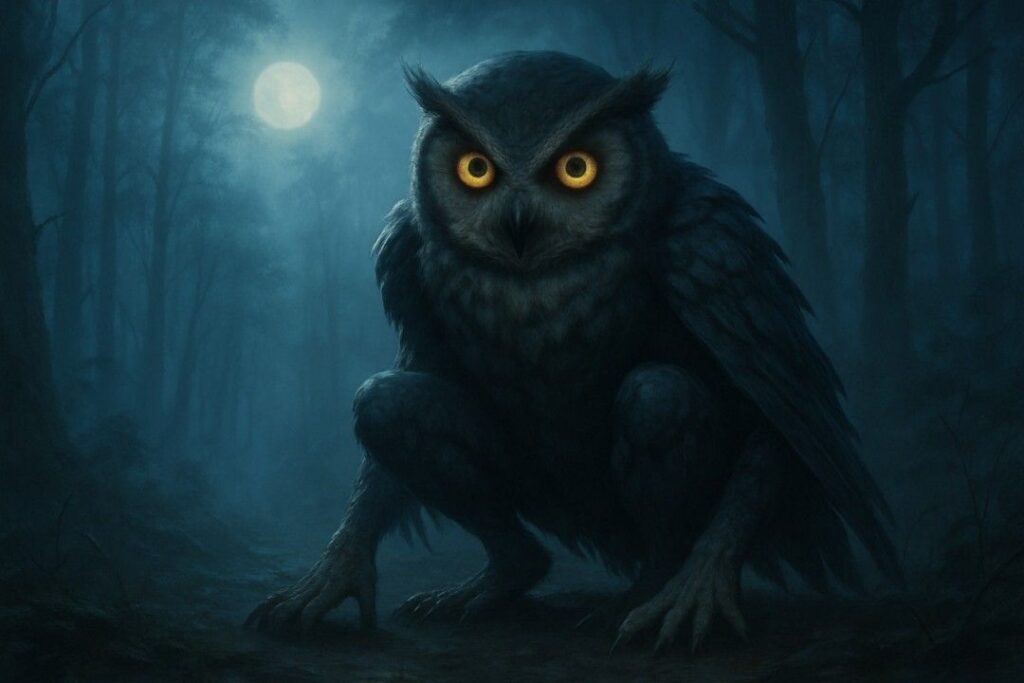
In Seminole legend, the Stikini is a terrifying owl-witch that preys on humans by night. By day, they appear as ordinary people, but at night they transform into monstrous, owl-like beings that consume human hearts. Their ability to blend in by day adds a chilling element of uncertainty. The Stikini legend is a stark warning about hidden dangers and the potential evil lurking beneath ordinary appearances.
13. Rolling Head
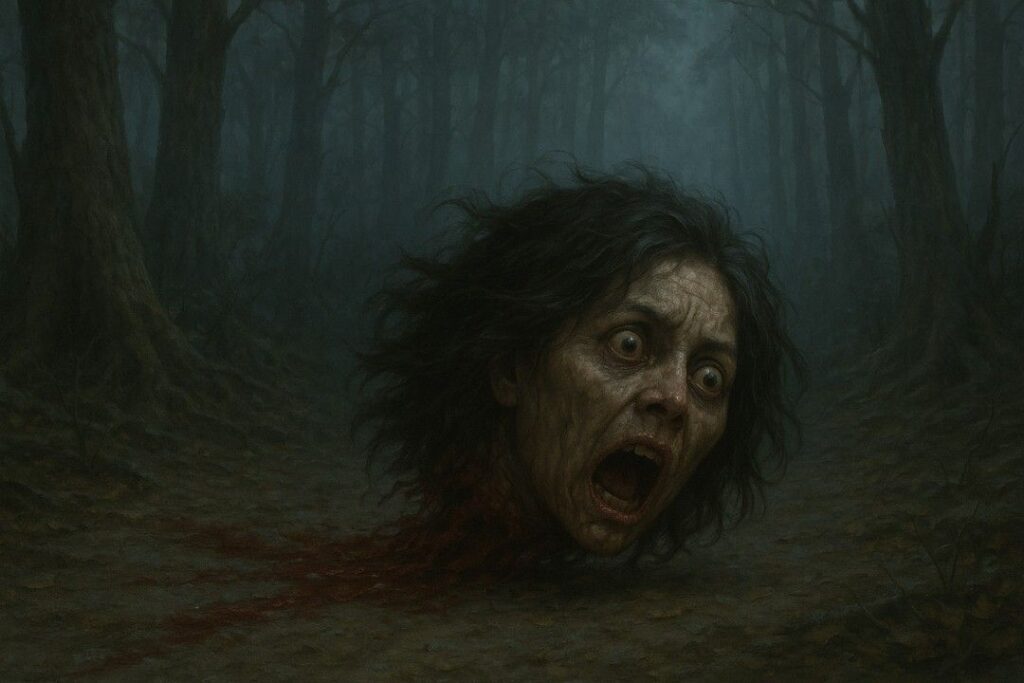
A tale from several Plains tribes, the Rolling Head is the vengeful, disembodied head of a woman wronged or killed unjustly. She rolls across the land in search of revenge, leaving terror and death in her wake. The Rolling Head is nearly impossible to escape, symbolizing relentless justice and the consequences of betrayal. Her story serves as a powerful reminder of the dangers of deceit and the need for respect within the community.
14. The Deer Woman

The Deer Woman appears throughout many tribal traditions, often as a beautiful woman with deer’s feet who lures men to their doom. Sometimes benevolent and sometimes deadly, she punishes those who are disrespectful or unfaithful and is known for her hypnotic allure. The Deer Woman legend blends themes of desire, danger, and retribution, acting as both a cautionary tale and a lesson in moral conduct.
15. Kushtaka

In Tlingit and Tsimshian mythology, Kushtaka are shapeshifting otter spirits known for luring people away from their homes, sometimes to save them and other times to doom them. Kushtaka can imitate the cries of loved ones, creating confusion and panic. Their dual nature—as both helpers and tricksters—adds to their mystique. The stories surrounding Kushtaka highlight the unpredictable and mysterious forces believed to inhabit the wilderness.

